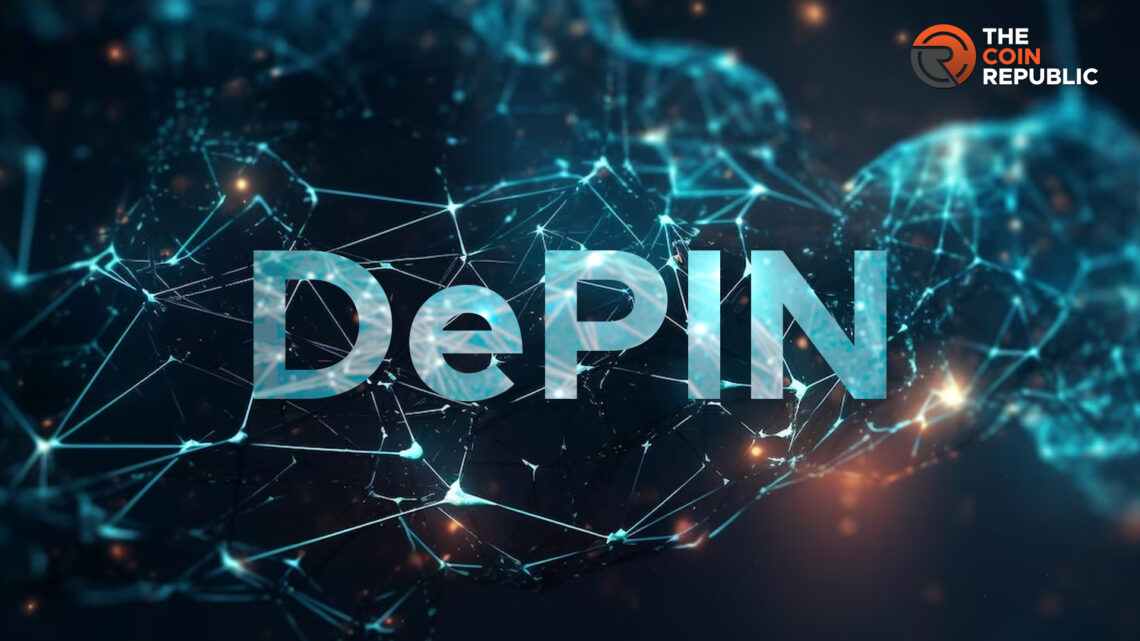- 1 DePIN stands for Decentralized Personal Information Network, is a system or framework designed to manage and exchange personal information in a decentralized manner.
- 2 It leverages blockchain technology or similar decentralized technologies to distribute control across multiple nodes or participants in the network.
- 3 It aims to give individuals more control over their personal information.
Decentralized Physical Infrastructure Networks, or DePIN, are blockchain-based networks that build, maintain, and operate physical hardware infrastructure in an open and decentralized manner.
A DePIN could have a variety of use cases, including data storage, wireless connectivity, computing, energy, data collection, and more. The DePIN protocols are attracting crypto investors lately due to their potential to impact a wide range of industries, including AI, internet, energy, wireless communications and more.
Decentralized physical infrastructure network: A Journey that finally led to DePIN
In November 2021, IoTeX was the first to place a label on this upcoming sector, calling it ‘MachineFi,’ a combination of the word machine with DeFi.
In April 2022, Multicoin introduced “Proof of Physical Work (PoPW)”, which explicitly refers to incentive structures that enable anyone to contribute permissionless to a set of shared objectives.
In July 2022, Lattice coined the “Token Incentivized Physical Network (TIPIN).” It was developed to describe networks that use token incentives to motivate individuals to participate in the deployment and operations of decentralized networks.
In September 2022, Borderless Capital proposed EdgeFi to include decentralized infrastructure networks that can focus on deploying hardware resources closer to end-users at the network’s edge.
In November 2022, Messari conducted a Twitter poll to unite the space under one acronym and asked voters to choose from PoPW, TIPIN, EdgeFi, and DePIN. DePIN won with a majority vote share of 31.6%.
In December 2022, Messari mentioned DePIN in its annual “Theses” for the first time and stated that it will be one of the most important areas of crypto investment for the next decade.
On January 19, 2023, Messari published a report completely devoted to DePIN.
Decentralized physical infrastructure networks and their Distribution
DePIN is a peer-to-peer (P2P) network that uses an open and decentralized marketplace and cryptocurrencies or tokens are used as rewards to attract and incentivize real-world physical infrastructure operators to join their networks.
It develops a system where individuals and communities can participate in building and managing essential infrastructure. It is achieved through tokenization, crowdsourcing, and decentralized governance.
The value of a DePIN’s token rises when the capital enters the network, which enables service providers to offer competitive pricing. It leads to growth in adoption and demand for DePIN’s services, ultimately attracting more investors, service providers, and users, and thus a further rise in the price of tokens.
Messari, a crypto research firm, has shared a report where DePIN has been classified into two groups:
Physical Resource Network (PRN)
The Decentralized Physical Infrastructure network protocols incentivize service providers to deploy location-dependent hardware that supplies certain physical locations with energy, connectivity, and geospatial data use cases.
Digital Resource Networks (DRN)
The DePIN protocols create a location-independent back-end for the cloud and incentivize service providers to supply digital resources like computing, storage, and bandwidth.
Understanding the working of a Decentralized physical infrastructure network
It functions through three key elements: off-chain networks, blockchains, and protocols.
Off-chain Networks
A DePIN’s off-chain network mainly comprises users and service providers. Users who need graphics processing unit (GPU) computing power, wireless community, or data storage can buy available resources from an open marketplace of service providers.
Blockchain
It brings end users and service providers together. The blockchain serves as a ledger, handles payments and escrow contracts and ensures that all transactions are processed correctly and can be tracked easily. The transactions between end users and service providers are time-stamped and recorded on-chain.
Protocols
The encoded rules or protocols define the key features of how a decentralized physical infrastructure network functions. The rules will determine security measures, the number of native crypto tokens in circulation, service provider eligibility, user-service provider interaction and more for DePIN.
What is the importance of DePIN?
The decentralized physical infrastructure network can build an open market for hardware infrastructure which is currently dominated by centralized Big Tech corporations. These technological advancements provide end-users with the ultimate power and thus eliminate a centralized entity that can censor or shut down services.
Cost efficiency is a key to supporting the growth of the network. Mature DePINs with strong service provider communities can offer competitive pricing and ease of access. Therefore, it serves as a reliable alternative to its traditional counterparts.
What are the benefits and concerns of DePIN?
| Benefits | Concerns |
| Cheaper and faster development of infrastructure | Increase in surface attacks |
| Increase in accessibility | Crucial security of physical components |
| Increase efficiency in resource utilization | Vulnerability to social engineering |
| Community control and ownership | Security and data privacy |
| Interoperability and Integration | |
| Monitoring and incident response | |
| Legal and regulatory uncertainties |
Conclusion: The Future of DePIN
The Decentralized Physical Infrastructure Networks are on the verge of growth, with an ambition to reshape infrastructure through community ownership and blockchain-based technologies. It carries significant potential for development and improvement in resource utilization. However, various challenges will act as a hurdle to growth and these challenges can not be ignored.
DePIN requires user attention to support the future of infrastructure.
FAQs
Where can DePIN be applied?
Some instances of DePIN applications include Cloud storage networks, energy infrastructure, telecommunications networks, and transportation platforms.
Who are the users of DePIN?
The top 3 DePINs in terms of market cap include Filecoin (FIL), Render (RNDR) and Theta Network (THETA).
What are DePIN Tokens?
These are a type of digital asset or currency that operates within a decentralized personal information network. It can serve multiple purposes within the network, acting as a medium for transactions, access rights, and incentives.

Amanda Shinoy is one of the few women in the space invested knee-deep in crypto. An advocate for increasing the presence of women in crypto, she is known for her accurate technical analysis and price prediction of cryptocurrencies. Readers are often waiting for her opinion about the next rally. She is a finance expert with an MBA in finance. Quitting a corporate job at a leading financial institution, she now engages herself full-time into financial education for the general public.


 Home
Home News
News






